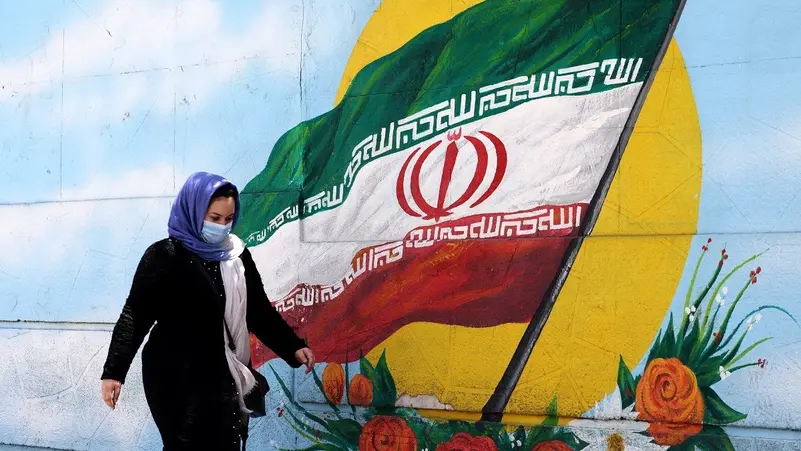The condemned man wears a mask only over his eyes, but the guards wear masks that cover their entire faces. Shame might explain the ghoulish dress code enforced at the foot of the Islamic Republic’s gallows, which is meant to conceal the actions of people who might suspect they’re engaged in something despicable. The Iranian regime does not want its agents harassed or targeted in a country where the mullahs are losing not just hearts and minds, but basic day-to-day control. It did not want its subjects to see the lack of fear or regret in the eyes of 23-year-old Majidreza Rahnavard, moments away from death.
Without the masks, the regime risks exposing itself as weak and evil, but with the identities of the killers and the humanity of the victim obscured there is still a thin facade of authority. The regime needed to film and disseminate the victim’s defiantly self-possessed final moments earlier this month in order to reestablish the balance of terror and deter the masses of Iranians who hate their rulers but don’t want to die at a young age.
Don’t cry, don’t read the Koran, and don’t pray, Rahnavard instructed future visitors to his grave. Celebrate, and play happy music. Next, the gallows.
Rahnavard’s heart-rending final words broke through the sinister aesthetics of the proceedings. For an American observer, what pushes things into the realm of the indelibly surreal is that the regime’s latest victim is wearing a National Football League team jersey. After carefully pausing the video several times, I’ve concluded that Rahnavard was hanged in Arizona Cardinals gear.
What does it mean? Rahnavard isn’t alive to tell us. There is always the possibility he was dressed by his executioners. But there is no planning what expression freedom will take. And for better and worse, America is the only country on earth whose culture can burst into visibility nearly anywhere in the world, at nearly any time.
The video of Rahnavard shows that American cultural hegemony ramifies so far and so deep that it can hook into the rawest and most painful human yearnings, ones that shape the lives of individuals and entire societies and history in general. The Arizona Cardinals brand, of all things, will now be inextricably linked to the 2022 Iranian uprising, and to Rahnavard’s heroic equanimity in his moments before death.
Again, there’s now no way of knowing whether the doomed young activist was using an Arizona Cardinals jersey to announce his admiration for America moments before the Islamic Republic executed him. Yet there is reason to think so, namely the recent tradition of Iranians subtly deploying American iconography to hint at their distaste for the regime. Rahnavard’s jersey recalled a detail that’s stuck with me from “A Separation,” Asghar Farhadi’s 2011 Oscar-winning film about the breakup of a secular couple in Tehran. The marriage fails in part because the wife wants to emigrate, and the husband does not. It was unnecessary for Farhadi to spell out where she wants to go, and why: A picture of a Native American chief appears in the background of several scenes that take place in the couple’s apartment. The wife is drawn to America, to a more egalitarian society and the promise of a vast new frontier. The regime propaganda hasn’t worked on her. She has been told America is awful her whole life and doesn’t believe it. Rahnavard clearly didn’t believe it either.
The logo of the NFL is a red, white, and blue shield with American-flag-like stars spangling its upper third. You can see it in the video taken before Rahnavard’s death, in the center crease of the jersey’s black collar. I have been to places in sub-Saharan Africa where NFL jerseys are everywhere, even though football isn’t watched or understood for thousands of miles around. Maybe it’s just that the jerseys are cool—or maybe the fact that football is played in one and only one country has led to an ingrained idea that the sport can operate as a stand-in for a place that is rich, powerful, and free.
The NFL is now so popular and so intertwined with the commanding heights of American business and politics that it is almost like a second, parallel America. That alone gives the Cardinals a global status, regardless of what they’ve failed to achieve on the gridiron. The Cardinals are the oldest franchise in the NFL, founded in Chicago in 1898, and one of only two surviving charter members of the National Football League. They have been so dependably mediocre for so long that only dedicated NFL fans are aware of how far back into football pre-history the Cardinals stretch. They have had some on-field success in the new century, nearly winning the Super Bowl behind future hall-of-famer Kurt Warner in 2009, and becoming the career home of Larry Fitzgerald, one of the greatest wide receivers of all time. But they are not one of the league’s better teams, let alone a legendary one. They have never won the Super Bowl.




